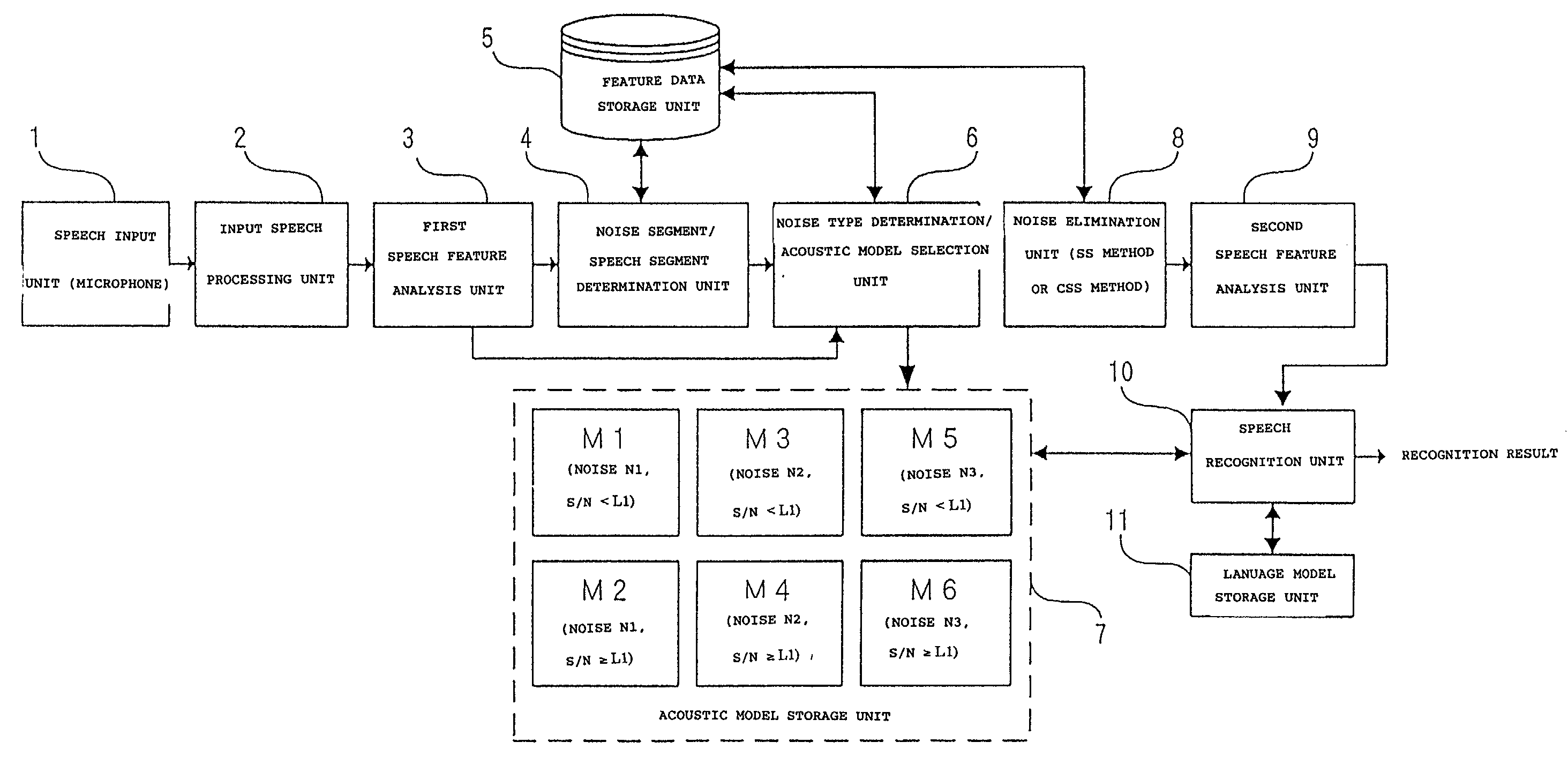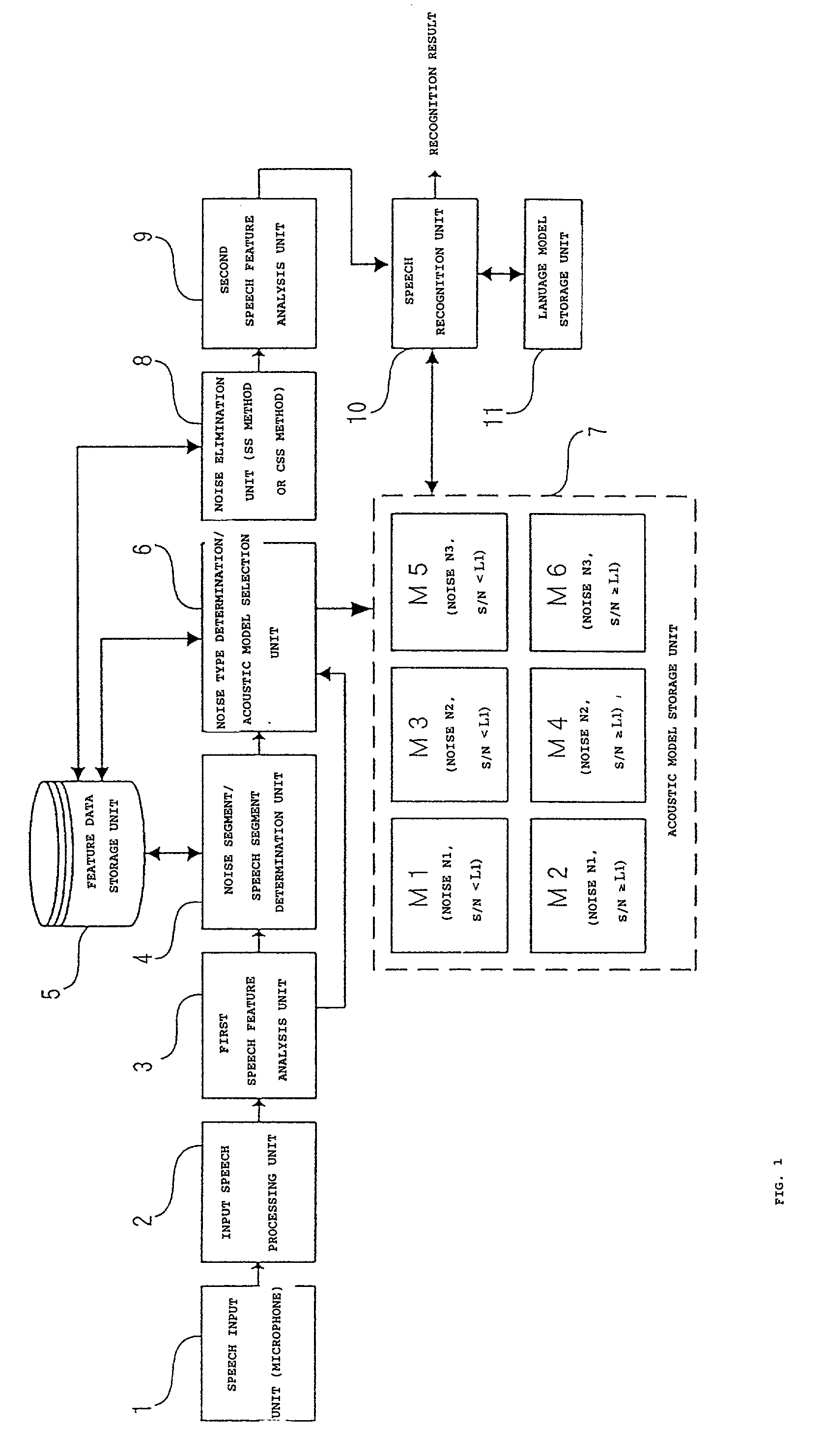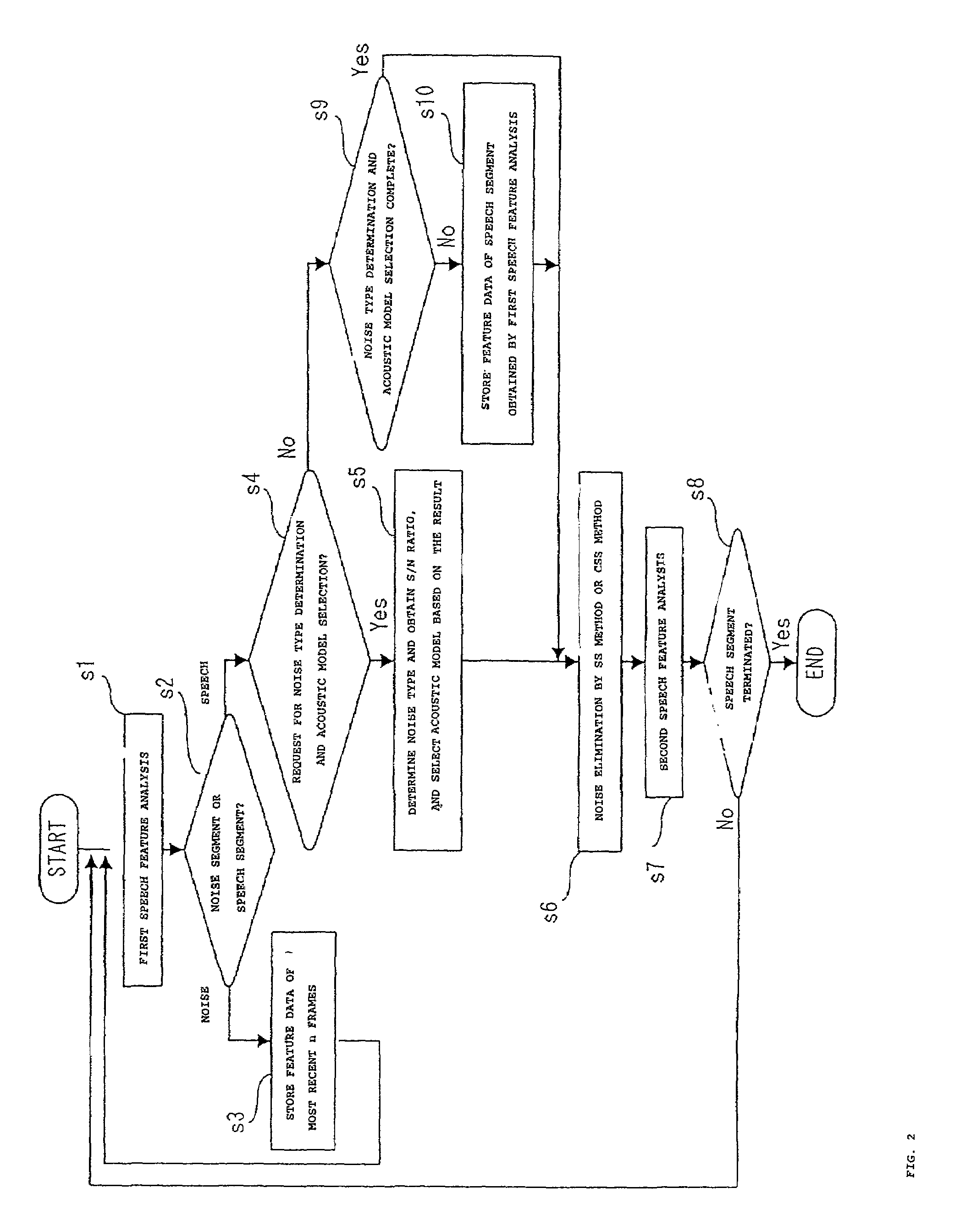Speech recognition method, program and apparatus using multiple acoustic models
a speech recognition and program technology, applied in the field of speech recognition, can solve the problems of low recognition rate, other types of noise may be present, and problems such as still remaining, and achieve the effect of high recognition ra
- Summary
- Abstract
- Description
- Claims
- Application Information
AI Technical Summary
Benefits of technology
Problems solved by technology
Method used
Image
Examples
first embodiment
[0062]FIG. 1 is a diagram showing an exemplary schematic construction of a speech recognition apparatus according to the present invention. The speech recognition apparatus can include a microphone 1, an input speech processing unit 2 including an amp and an A / D converter, a first speech feature analysis unit 3, a noise segment / speech segment determination unit 4, a feature analysis data storage unit 5, a noise type determination / acoustic model selection unit 6, an acoustic model storage unit 7, a noise elimination unit 8, a second speech feature analysis unit 9, a speech recognition unit 10, and a language model storage unit 11. The functions and operations of each of the components will be described below with reference to a flowchart shown in FIG. 2.
[0063]Referring to FIG. 2, the first speech feature analysis unit 3 analyzes the speech feature of speech data to be recognized which has undergone an A / D conversion, on a frame-by-frame basis (the duration of each frame is, for examp...
second embodiment
[0087]Referring to FIG. 4, the speech feature analysis unit 21 analyzes the feature of speech data to be processed which has undergone an A / D conversion, on a frame-by-frame basis (the duration of each frame is, for example, on the order of 20 to 30 msec) (step s21). The speech feature analysis in the second embodiment obtains cepstrum coefficients (e.g., mel frequency cepstrum coefficients or LPC cepstrum coefficients).
[0088]The noise segment / speech segment determination unit 4 determines whether the speech data is a noise segment or a speech segment based on the result of the speech feature analysis (step s22). If it is determined that the speech data is a noise segment, the noise segment / speech segment determination unit 4 further determines whether the noise segment exists at the beginning or the end of the speech segment along the time axis (step s23).
[0089]Based on the result of the determination, if the noise segment exists at the beginning of the speech segment along the tim...
third embodiment
[0118]FIG. 5 is a diagram showing the schematic construction of a speech recognition apparatus according to the The speech recognition apparatus can include a microphone 1, an input speech processing unit 2 including an amp and an A / D converter, a first speech feature analysis unit 3, a noise segment / speech segment determination unit 4, a feature data storage unit 5, a noise type determination / acoustic model selection unit 6, a acoustic model storage unit 7, a noise elimination unit 8, a second speech feature analysis unit 9, a CMN operation unit (CMN noise elimination unit) 31, a speech recognition unit 10, and a language model storage unit 11. The components will be described below with reference to a flowchart shown in FIG. 6.
[0119]Referring to FIG. 6, first, the first speech feature analysis unit 3 analyzes the feature of speech data to be recognized which has undergone an A / D conversion, on a frame-by-frame basis (the duration of each frame is, for example, on the order of 20 ...
PUM
 Login to View More
Login to View More Abstract
Description
Claims
Application Information
 Login to View More
Login to View More - R&D
- Intellectual Property
- Life Sciences
- Materials
- Tech Scout
- Unparalleled Data Quality
- Higher Quality Content
- 60% Fewer Hallucinations
Browse by: Latest US Patents, China's latest patents, Technical Efficacy Thesaurus, Application Domain, Technology Topic, Popular Technical Reports.
© 2025 PatSnap. All rights reserved.Legal|Privacy policy|Modern Slavery Act Transparency Statement|Sitemap|About US| Contact US: help@patsnap.com



